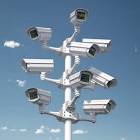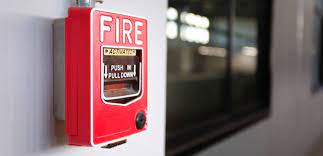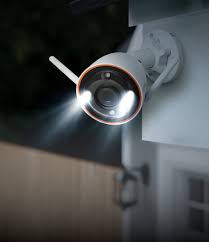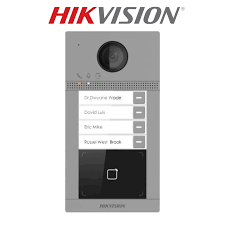Mobile Surveillance Camera: Enhancing Security On the Go
In today’s fast-paced world, security has become a top priority for individuals and businesses alike. The need for effective surveillance solutions that can adapt to various environments and situations has led to the rise of mobile surveillance cameras. These portable devices offer flexibility, convenience, and enhanced security on the go.
Mobile surveillance cameras are compact, lightweight, and designed to be easily deployed in different locations. Whether it’s monitoring construction sites, public events, or temporary installations, these cameras provide a reliable solution for capturing real-time video footage and ensuring the safety of people and property.
One of the key advantages of mobile surveillance cameras is their wireless connectivity. They can be equipped with built-in Wi-Fi or cellular capabilities, allowing users to remotely access live video feeds from any location using smartphones or other connected devices. This feature enables quick response times in case of emergencies or suspicious activities.
The versatility of mobile surveillance cameras extends beyond their wireless capabilities. Many models are equipped with advanced features such as motion detection sensors, night vision technology, pan-tilt-zoom (PTZ) functionality, and high-definition video recording. These features enable users to monitor large areas effectively, even in low-light conditions.
Another significant advantage of mobile surveillance cameras is their portability. They can be easily moved from one location to another as per changing security needs. Whether it’s monitoring a construction site during different phases of a project or providing temporary security at an event venue, these cameras offer flexibility without compromising on quality or performance.
Moreover, mobile surveillance cameras often come with rugged designs that can withstand harsh weather conditions and vandalism attempts. This durability ensures continuous operation even in challenging environments such as outdoor construction sites or remote areas where traditional wired surveillance systems may not be feasible.
In addition to their applications in commercial settings, mobile surveillance cameras also serve as a valuable tool for law enforcement agencies. They can be used for rapid deployment during investigations, crowd management, or surveillance in high-crime areas. The ability to gather real-time video evidence can significantly aid in crime prevention and detection.
While mobile surveillance cameras offer numerous benefits, it’s important to consider certain factors when choosing the right device. Factors such as battery life, storage capacity, video quality, and remote access options should be evaluated based on specific security requirements.
In conclusion, mobile surveillance cameras have revolutionized the way we approach security. With their wireless connectivity, advanced features, portability, and durability, these devices provide a flexible and effective solution for monitoring various environments. Whether it’s ensuring safety at events or enhancing security in remote locations, mobile surveillance cameras are a valuable tool that empowers individuals and businesses to stay one step ahead in today’s ever-changing world.
8 Frequently Asked Questions About Mobile Surveillance Cameras
- What are the benefits of a mobile surveillance camera?
- How do I install a mobile surveillance camera?
- What is the best type of mobile surveillance camera for my needs?
- How much does a mobile surveillance camera cost?
- Are there any legal restrictions on using a mobile surveillance camera?
- How do I set up remote access to my mobile surveillance cameras?
- What features should I look for in a mobile surveillance camera system?
- Is it possible to view live footage from my mobile surveillance cameras remotely?
What are the benefits of a mobile surveillance camera?
Mobile surveillance cameras offer several benefits that make them a valuable tool for enhancing security:
- Flexibility: Mobile surveillance cameras can be easily moved and deployed in different locations as per changing security needs. This flexibility allows users to monitor areas that may not have a permanent surveillance system in place or require temporary monitoring.
- Portability: These cameras are compact and lightweight, making them easy to transport and install quickly. They can be set up in various environments, including construction sites, event venues, remote areas, or places without existing infrastructure.
- Wireless Connectivity: Mobile surveillance cameras often come with built-in Wi-Fi or cellular capabilities, enabling remote access to live video feeds from any location using smartphones or other connected devices. This feature allows for real-time monitoring and quick response times during emergencies or suspicious activities.
- Advanced Features: Many mobile surveillance cameras are equipped with advanced features such as motion detection sensors, night vision technology, pan-tilt-zoom (PTZ) functionality, and high-definition video recording. These features enhance the camera’s capabilities and enable effective monitoring even in challenging conditions.
- Durability: Mobile surveillance cameras are designed to withstand harsh weather conditions and vandalism attempts. Their rugged construction ensures continuous operation even in outdoor settings or areas prone to tampering.
- Rapid Deployment: These cameras can be quickly deployed in emergency situations or investigations by law enforcement agencies. Their ability to gather real-time video evidence aids in crime prevention and detection.
- Cost-effective Solution: Mobile surveillance cameras offer a cost-effective alternative to traditional wired surveillance systems that require extensive installation and infrastructure setup. They eliminate the need for running cables and provide a flexible solution for temporary security needs.
- Remote Monitoring: With wireless connectivity, users can remotely access live video feeds from mobile surveillance cameras using smartphones or other devices. This feature allows for 24/7 monitoring from any location with an internet connection.
- Scalability: Mobile surveillance cameras can be easily expanded or integrated with existing surveillance systems. Additional cameras can be deployed as needed, providing scalability to adapt to changing security requirements.
- Enhanced Safety: By providing real-time video monitoring and recording, mobile surveillance cameras contribute to the overall safety of individuals and property. They act as a deterrent to potential threats and aid in identifying and resolving security incidents.
In summary, the benefits of mobile surveillance cameras include flexibility, portability, wireless connectivity, advanced features, durability, rapid deployment, cost-effectiveness, remote monitoring capabilities, scalability, and enhanced safety. These advantages make them a valuable tool for various industries and applications where temporary or flexible security solutions are required.
How do I install a mobile surveillance camera?
Installing a mobile surveillance camera can be a straightforward process if you follow the necessary steps. Here’s a general guide on how to install a mobile surveillance camera:
- Choose the Right Location: Determine the areas where you want to monitor and ensure they have a stable surface or mounting point. Consider factors such as line of sight, coverage area, and accessibility.
- Power Source: Mobile surveillance cameras typically require a power source. Ensure that the chosen location has access to an electrical outlet or consider using battery-powered cameras if wiring is not feasible.
- Mounting: Depending on the camera model, you may need to mount it on a wall, ceiling, pole, or other surfaces. Follow the manufacturer’s instructions for proper mounting techniques and ensure that it is securely fixed in place.
- Adjust Camera Angle: Position the camera at the desired angle to achieve optimal coverage of the area you want to monitor. Ensure that important areas are within the camera’s field of view.
- Connectivity: If your mobile surveillance camera supports wireless connectivity, follow the manufacturer’s instructions to connect it to your Wi-Fi network or cellular data plan. This step may involve downloading a mobile app and following setup procedures provided by the manufacturer.
- Test Connectivity: After connecting your camera to the network, test its connectivity by accessing live video feeds from your smartphone or other connected devices. Make sure you can access and control the camera remotely.
- Configure Settings: Use the manufacturer-provided software or app to configure settings such as motion detection sensitivity, recording options, storage preferences, and any other desired features specific to your surveillance needs.
- Test Recording and Alerts: Verify that your camera is recording properly and set up any necessary alerts or notifications for events such as motion detection or system malfunctions.
- Regular Maintenance: Keep an eye on your mobile surveillance camera’s performance regularly. Check for firmware updates provided by the manufacturer and ensure that all components are clean and functioning correctly.
It’s important to note that the specific installation process may vary depending on the brand and model of your mobile surveillance camera. Always consult the manufacturer’s instructions and guidelines for accurate installation steps tailored to your device.
What is the best type of mobile surveillance camera for my needs?
The best type of mobile surveillance camera for your needs will depend on several factors. Here are a few key considerations to help you make an informed decision:
- Purpose and Environment: Determine the specific purpose for which you need the mobile surveillance camera and the environment in which it will be deployed. For example, if you require surveillance at construction sites or outdoor events, look for cameras with rugged designs that can withstand harsh weather conditions.
- Wireless Connectivity: Consider whether you need a camera with built-in Wi-Fi or cellular capabilities for remote access to live video feeds. This feature allows you to monitor the camera’s footage from anywhere using smartphones or other connected devices.
- Video Quality: Assess the level of video quality required for your surveillance needs. High-definition (HD) cameras offer clearer and more detailed footage, while lower resolution cameras may be suitable for certain applications where image clarity is not as critical.
- Power Source: Evaluate the power options available, such as battery-powered cameras or those that can be connected to a power source. Battery life is an important consideration if you need extended periods of surveillance without frequent recharging.
- Advanced Features: Determine if any specific features are essential for your requirements. This could include motion detection sensors, night vision capabilities, pan-tilt-zoom (PTZ) functionality, or even audio recording capabilities.
- Storage Capacity: Consider the storage capacity of the camera for storing recorded video footage. Some cameras have built-in storage, while others may require external storage devices such as SD cards or network-attached storage (NAS) systems.
- Scalability and Integration: If you anticipate expanding your surveillance system in the future, consider whether the mobile camera can integrate with other security devices or software platforms to provide a scalable solution.
- Budget: Set a budget range that aligns with your requirements and explore options within that range that offer the necessary features and functionality.
It is recommended to research and compare different models from reputable manufacturers, read customer reviews, and consult with security professionals or experts who can provide personalized recommendations based on your specific needs.
How much does a mobile surveillance camera cost?
The cost of a mobile surveillance camera can vary depending on several factors, including the brand, features, and specifications of the device. Generally, the price range for a basic mobile surveillance camera starts from around $100 and can go up to several hundred dollars. Cameras with more advanced features such as high-definition video recording, night vision capabilities, and PTZ functionality tend to be more expensive. Additionally, cameras that offer extended battery life or rugged designs for outdoor use may also come at a higher cost. It’s important to research and compare different options to find a mobile surveillance camera that fits your specific needs and budget.
Are there any legal restrictions on using a mobile surveillance camera?
The use of mobile surveillance cameras is subject to legal regulations and restrictions that may vary depending on the jurisdiction. It is essential to comply with applicable laws and regulations when using such devices. While I can provide general information, it is crucial to consult with local authorities or legal professionals for specific guidance in your region.
Here are some common legal considerations related to the use of mobile surveillance cameras:
- Privacy Laws: Privacy laws vary from country to country and even within different regions. These laws typically protect individuals’ rights to privacy, including in public spaces. It is important to ensure that the use of mobile surveillance cameras does not infringe upon these privacy rights.
- Consent: In many jurisdictions, obtaining consent from individuals before recording them is required, especially in private areas or where a reasonable expectation of privacy exists. Posting clear signage indicating the presence of surveillance cameras can help inform individuals about their potential recording.
- Audio Recording: Some jurisdictions have specific regulations regarding audio recording. In certain cases, separate consent may be required to record audio along with video footage.
- Public vs. Private Property: The rules governing the use of surveillance cameras may differ depending on whether they are deployed in public or private areas. Public spaces often have fewer restrictions compared to private spaces where consent or authorization may be necessary.
- Data Protection: If the recorded video footage contains personal data, such as identifiable information about individuals, additional data protection laws and regulations might apply regarding its storage, access, and retention.
- Workplace Regulations: In work environments, employers must adhere to labor laws and regulations that protect employee rights regarding surveillance in the workplace.
- Local Regulations: Local governments or municipalities may have specific ordinances or bylaws governing the use of surveillance cameras in certain areas or situations.
It is crucial to familiarize yourself with relevant laws and regulations pertaining to mobile surveillance camera usage in your jurisdiction and seek legal advice if needed. Complying with these regulations helps ensure the ethical and lawful use of such devices while protecting the rights and privacy of individuals.
How do I set up remote access to my mobile surveillance cameras?
Setting up remote access to your mobile surveillance cameras is a straightforward process that requires a few essential steps. Here’s a general guide to help you get started:
- Determine camera compatibility: Ensure that your mobile surveillance cameras support remote access features. Check the camera’s specifications or user manual for information on remote viewing capabilities.
- Connect the cameras to your network: Ensure that your cameras are properly connected to your local network. This typically involves connecting them to your router or switch using Ethernet cables.
- Assign static IP addresses: To ensure consistent connectivity, assign static IP addresses to each camera on your network. This will prevent IP address conflicts and make it easier to access the cameras remotely.
- Configure port forwarding: Accessing your cameras remotely requires configuring port forwarding on your router. Log in to your router’s administration panel and locate the port forwarding settings. Create rules that forward specific ports (usually TCP or UDP) from the external IP address of your router to the internal IP addresses of your cameras.
- Enable dynamic DNS (DDNS): If you don’t have a static public IP address, set up a dynamic DNS service. DDNS allows you to assign a hostname (e.g., mycameras.ddns.net) that automatically updates with your changing public IP address, making it easier to access your cameras remotely.
- Set up user accounts and passwords: Create strong and unique usernames and passwords for accessing each camera’s interface or video management software (VMS). This step ensures secure remote access and protects against unauthorized entry.
- Install mobile surveillance apps or software: Download and install the appropriate mobile surveillance app or software provided by the camera manufacturer onto your smartphone or tablet. These apps allow you to view live video feeds, playback recorded footage, and manage camera settings remotely.
- Configure remote access settings: Open the mobile surveillance app on your device and enter the necessary information such as the camera’s IP address, port number, and login credentials. Follow the app’s instructions to complete the setup process.
- Test remote access: Once configured, test remote access by connecting to your cameras from a different network or using a cellular data connection. Ensure that you can view live video feeds and access camera settings without any issues.
It’s important to note that the specific steps may vary depending on the brand and model of your mobile surveillance cameras. Always refer to the user manual or manufacturer’s documentation for detailed instructions tailored to your specific equipment.
By following these steps, you can set up remote access to your mobile surveillance cameras and enjoy the convenience of monitoring your premises from anywhere at any time.
What features should I look for in a mobile surveillance camera system?
When selecting a mobile surveillance camera system, it’s important to consider several key features to ensure that it meets your specific security needs. Here are some features to look for:
- Wireless Connectivity: Opt for a system that offers reliable wireless connectivity options such as built-in Wi-Fi or cellular capabilities. This enables remote access to live video feeds from any location using smartphones or other connected devices.
- High-Quality Video: Look for cameras that provide high-definition (HD) video quality. Clear and detailed footage is essential for effective monitoring and identification of individuals or objects.
- Night Vision: Consider cameras with infrared (IR) or low-light capabilities for clear visibility in dark or low-light environments. This feature is crucial for 24/7 surveillance, especially in outdoor or poorly lit areas.
- Motion Detection: Choose cameras equipped with motion detection sensors. This feature triggers recording and alerts when any movement is detected within the camera’s field of view, helping to focus attention on potential security threats.
- Pan-Tilt-Zoom (PTZ) Functionality: PTZ cameras allow remote control of the camera’s movement, enabling users to pan horizontally, tilt vertically, and zoom in or out as needed. This flexibility provides comprehensive coverage of large areas and allows closer examination of specific details.
- Storage Capacity: Evaluate the storage capacity of the camera system, including onboard storage or compatibility with external storage devices such as SD cards or network-attached storage (NAS). Sufficient storage capacity ensures that video footage can be stored for an extended period if necessary.
- Power Options: Consider the power options available for the mobile surveillance camera system. Look for cameras with long battery life, rechargeable batteries, or alternative power sources like solar panels if continuous operation is required without easy access to electrical outlets.
- Durability and Weather Resistance: Ensure that the cameras are designed to withstand harsh weather conditions and potential vandalism attempts if they will be used in outdoor or rugged environments. Look for cameras with an IP rating indicating their resistance to dust and water.
- Mobile App and Remote Access: Check if the camera system has a dedicated mobile app that allows easy access to live video feeds, playback, and system control from smartphones or tablets. This feature provides convenience and flexibility in managing surveillance on the go.
- Scalability: Consider whether the camera system can be expanded or integrated with additional cameras or security devices as your needs evolve over time. A scalable system allows for future expansion without requiring a complete overhaul of the existing infrastructure.
By considering these features, you can choose a mobile surveillance camera system that aligns with your specific security requirements and provides reliable and effective monitoring capabilities.
Is it possible to view live footage from my mobile surveillance cameras remotely?
Yes, it is possible to view live footage from your mobile surveillance cameras remotely. Many mobile surveillance cameras come equipped with built-in Wi-Fi or cellular connectivity, allowing you to access the live video feed from your cameras using a smartphone or other connected devices.
To view the live footage remotely, you typically need to install a dedicated mobile app provided by the camera manufacturer. This app allows you to connect to your cameras and stream the video feed directly to your mobile device. You may need to create an account and log in to the app using the camera’s unique credentials.
Once connected, you can access the live video feed from your mobile surveillance cameras anytime and anywhere as long as you have an internet connection on your smartphone. This remote viewing capability provides convenience and peace of mind, allowing you to monitor your premises or property in real-time, even when you are away.
It’s important to ensure that your mobile surveillance cameras are properly set up for remote viewing. This includes configuring network settings, ensuring proper internet connectivity, and following any specific instructions provided by the camera manufacturer.
Additionally, it’s recommended to secure your remote access by setting strong passwords for both the camera and the associated app. Regularly updating firmware and keeping up with security patches also helps protect against potential vulnerabilities.
By leveraging the remote viewing capabilities of mobile surveillance cameras, you can stay connected and keep a watchful eye on your property no matter where you are.




